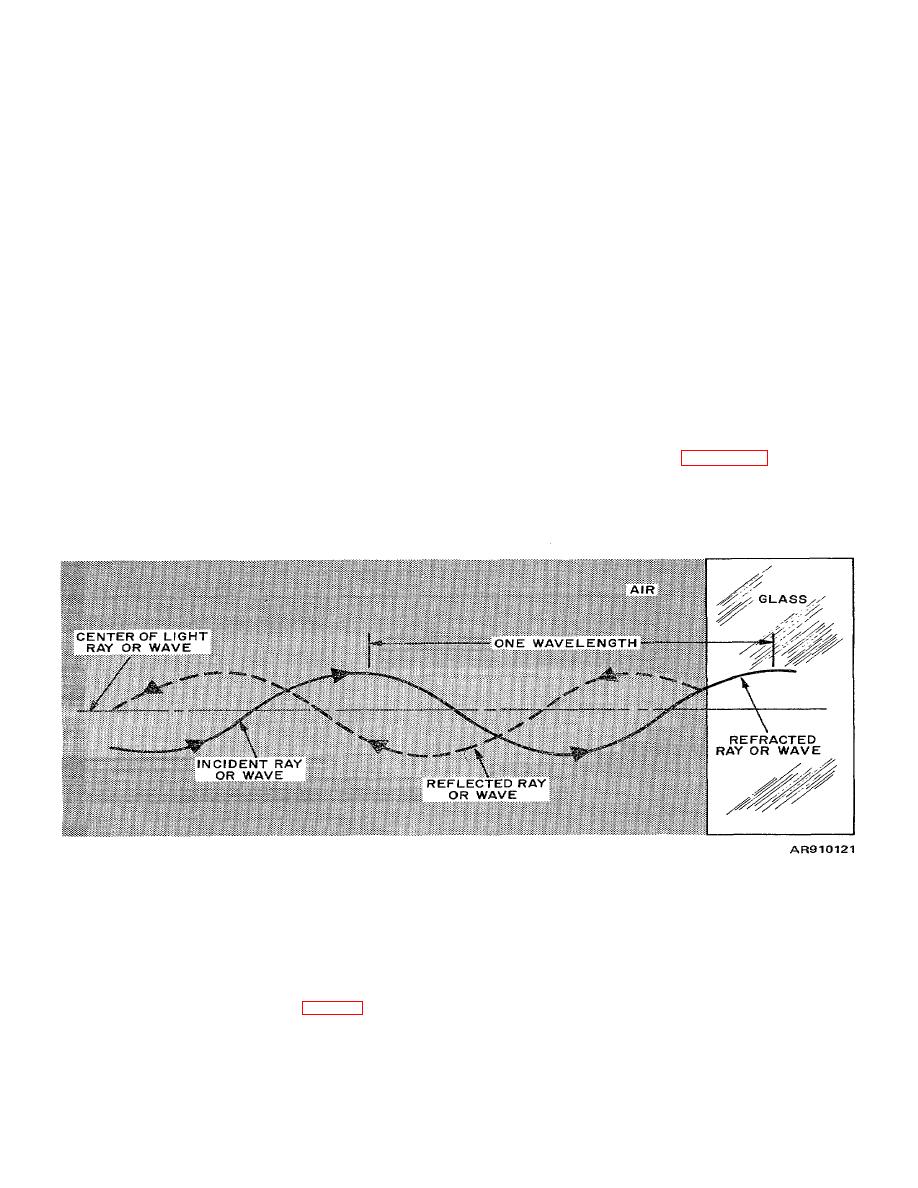 |
|||
|
|
|||
|
Page Title:
Figure 4-31. Light ray striking uncoated surface. |
|
||
| ||||||||||
|
|
 TM 9-258
d. A number of types of coating have been tested
the surfaces of optical components in an instrument
and applied to optical elements. Some have proved too
tends to throw a veil of stray light over the field of view.
soft to stand up under handling in normal use and
Coating will reduce these internal reflections. Better
service. The present transparent coating consists of
contrast and sharper definition of the image will be the
magnesium fluoride applied by an evaporation method of
result even under intense illumination.
(3) Reduction of ghost images.
Internal
sublimation under heat in vacuum. The coating is
durable enough to permit handling during assembly and
reflections from the curved lens surfaces sometimes
disassembly and to withstand careful cleaning.
form an image or series of images which are slightly out
e. The main advantages of coating are as follows:
of focus and not quite as bright as the image of focus.
(1) Increased light transmission. When all elements
These ghost images are very distractive for proper
of a straight telescope are coated, except the reticle and
aiming. Coating will greatly reduce the formation of
filters, there is approximately 90 percent transmission of
ghost images.
(4) Reduction of front surface reflections.
light instead of 60 percent, or half again as much light as
would pass through the instrument were its optics
Reflections from the front surface of observation
uncoated. This improvement will result in a brighter
instruments are very noticeable at night and might give
image at times when light is scarce. It will be most
the observer's position away. By reducing reflections by
obvious at dawn, dusk, or at night; in other words, at
means of coating, this danger is reduced.
times of poor visibility. Targets are visible from 1/4 to 1/2
4-14. Theory.
hour longer at dusk and at dawn. The range of vision at
a. Consider a tiny portion of a light ray so highly
night is increased approximately 20 percent for standard
magnified as to show its wave structure. A ray of light
binoculars. Therefore, coating is essential in night
striking an uncoated glass surface could then be pictured
glasses or in instruments to be used under adverse
as a wavy line as shown in figure 4-31. The reflected
conditions and now is used in all military optical systems.
ray, which can represent 4 percent of the total light, is
(2) Reduction of haze. Light reflected from
represented by the wavy dotted line and will shift in
phase 180 (reverse direction of vibration).
Figure 4-31. Light ray striking uncoated surface.
b. If a thin film of transparent substance were
so, they would reinforce each other resulting in the
placed on the glass, there would be two surfaces from
double amount of light being reflected and the minimum
which the wave would be reflected and similarly shifted in
amount of light being transmitted through the surfaces.
phase 180ƒ. If this film were one-half as thick as a
This condition would be desirable in a reflector but
undesirable in a lens.
wavelength of light, the reflected waves from the two
surfaces would follow the same path (fig 4-32). In doing
4-32
|
|
Privacy Statement - Press Release - Copyright Information. - Contact Us |